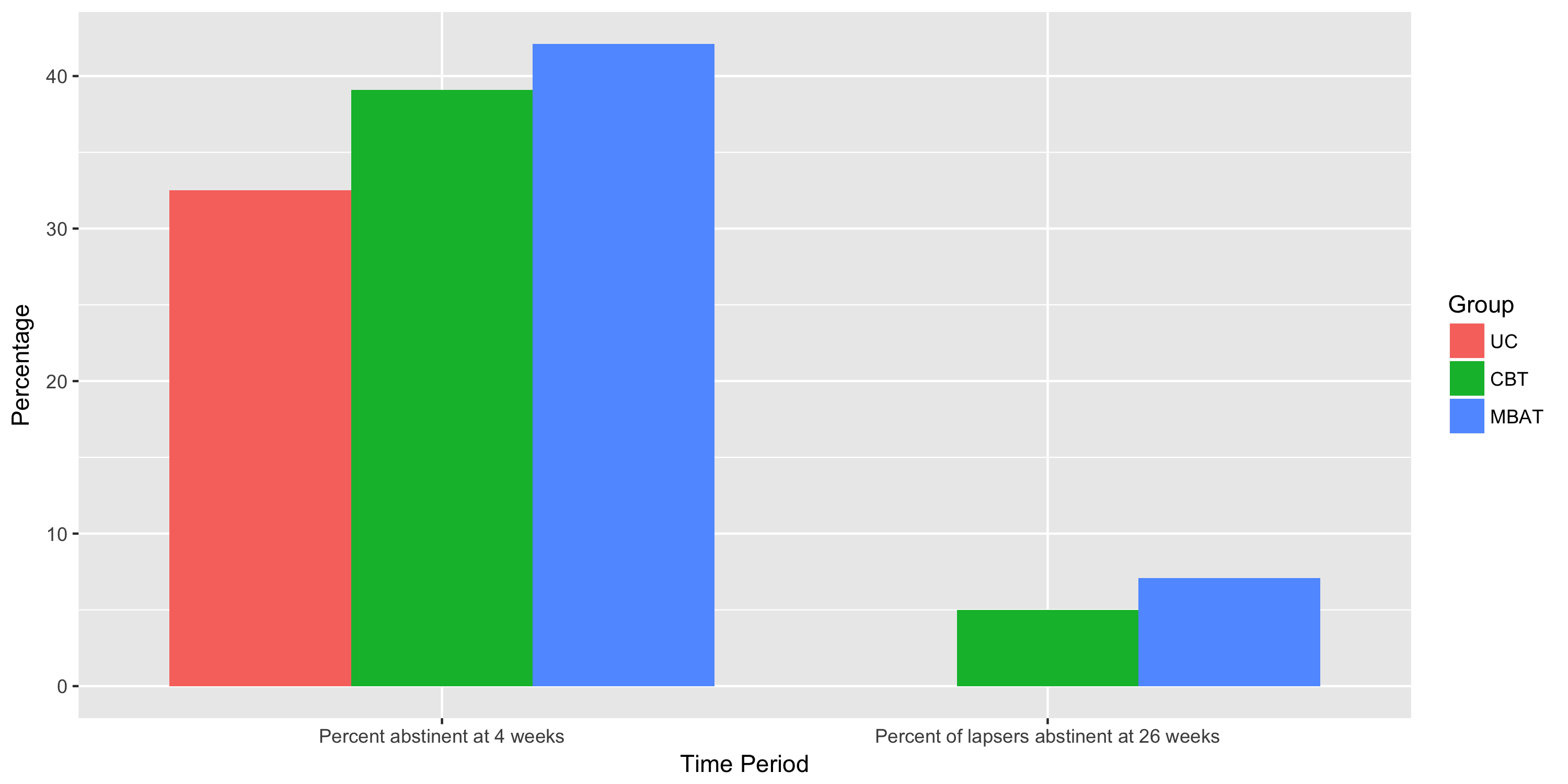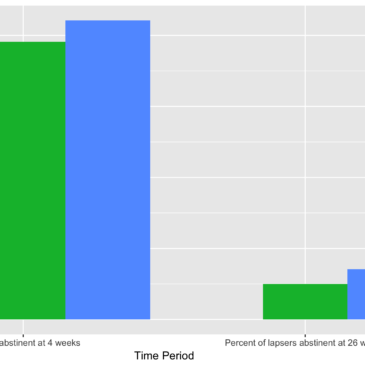“Mindfulness” can be defined as a state of awareness of one’s thoughts, feelings, and surroundings. A growing body of research has shown that mindfulness-based stress reduction can be an effective means of treating a wide range of health conditions, including addiction. However, only a handful of relatively small studies have specifically examined the effects of mindfulness-based treatments on smoking. This week, as part of our Special Series on Addiction and Mindfulness, ASHES reviews a study by Jennifer Vidrine and colleagues comparing Mindfulness Based Addiction Treatment (MBAT) to other treatments for quitting smoking.
What is the research question?
Are smokers who receive MBAT more likely to stop smoking and recover from a lapse in smoking cessation than smokers who receive Cognitive Behavioral Therapy (CBT) or usual care (UC)?
What did the researchers do?
Vidrine and colleagues recruited 412 smokers in Houston, Texas with a desire to quit and randomly assigned them to MBAT, CBT, or UC. The treatments involved four (UC) or eight (MBAT and CBT) weekly sessions with scheduled quit days occurring at the third (UC) or fifth (MBAT and CBT) session. The researchers measured whether participants were abstinent 4 weeks after their quit date and 26 weeks after their quit date using both participants’ self-report and exhaled carbon monoxide levels. They used multi-level logistic regression to compare the effects of MBAT,CBT, and UC on smoking cessation and lapse recovery. They defined smoking cessation as being abstinent at both the 4- and 26-week follow-ups, and they defined lapse recovery as smoking at the 4-week follow-up but being abstinent at the 26-week follow-up.
What did they find?
Four weeks after the day they were supposed to quit, fewer than half of participants within each treatment group were abstinent, dropping to less than a quarter by the 26-week follow-up. Accounting for the age, education, gender, race, and partner status of participants, smokers who received MBAT were no more likely to have successfully quit smoking than those who received CBT or UC. However, smokers who received MBAT did have improved lapse recovery compared to those who received CBT or UC. (See Figure 1.)
 Figure. Percent of subjects abstinent at 4 weeks and lapsers abstinent at 26 weeks. None of the subjects in the Usual Care group recovered from a lapse at 26 weeks. Click image to enlarge.
Figure. Percent of subjects abstinent at 4 weeks and lapsers abstinent at 26 weeks. None of the subjects in the Usual Care group recovered from a lapse at 26 weeks. Click image to enlarge.
Why do these findings matter?
While MBAT was not found to be more effective than CBT or UC in preventing overall cessation from smoking, it was more effective in helping individuals recover from a lapse. This outcome is perhaps not surprising given MBAT’s focus on accepting negative outcomes and learning to correct them. For this reason, MBAT shows promise as a form of treatment for preventing smoking relapse in addition to existing forms of treatment.
Every study has limitations. What about this one?
This study’s participants were smokers in the Houston metropolitan area responding to local print media, making it a convenience sample that is not necessarily reflective of the general population of smokers. Of those participants, only 65 percent stayed in the study for all 26 weeks, which further weakens the applicability of the study’s findings.
For more information:
Do you want to learn more about how mindfulness can be used to quit smoking? Please visit the National Institute of Health’s page on meditation and its benefits. For additional tools, please visit the BASIS Addiction Resources page.
— Timothy Edson
What do you think? Please use the comment link below to provide feedback on this article.




